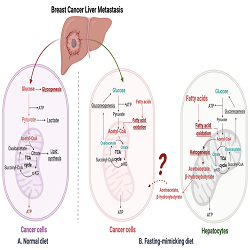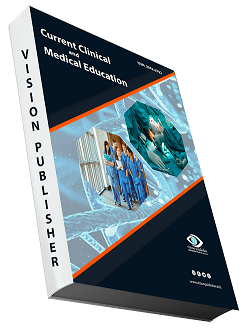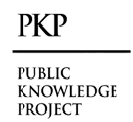Physiological study of liver and kidney of female patient with breast cancer which treated with different doses of Chemotherapy
Keywords:
breast cancer, Adriamycin, cyclophosphamide, liver enzyme, urea, creatinineAbstract
Following the evaluation of tumor histology, organ function is a crucial element to consider when selecting a chemotherapy regimen. Patients undergoing chemotherapy require a comprehensive evaluation of their liver function prior to treatment to determine which medications may not be acceptable and which drug doses should be adjusted. The common protocol in treatment of breast cancer is given mix anticancer drug cyclophosphamide and Adriamycin. It is crucial to understand that anomalies in liver function tests after therapy could be caused by the medication rather than the advancing illness. This page discusses the hepatic toxicity of chemotherapy drugs and offers dose adjustments in response to abnormalities in liver function. The focus is on substances that are recognized to be hepatotoxic, as well as those that have hepatic metabolism and renal failure . In this study taking 150 female patient with breast cancer and 30 healthy women. the 150 female patient divided in to three group depend on the number of chemotherapy dose taking during the treatment and making the following : first taking from one dose to four dose of chemotherapy , second taking from five dose to eight dose of chemotherapy , third taking from nine dose to above dose of chemotherapy may be reach twenty four dose . the result showed significant difference in liver enzyme AST,ALP and ALT . AST , ALT and ALP assessment showed significant decreased in all groups when compared with control group and showed significant increased of urea and creatinine when compared with control group. The different number of chemotherapy dose lead to disturbance of liver enzyme , urea and creatinine , and the side effect increased with increased number of dose .
Downloads
References
Rivas, P. M. D. R., Lanza, T. A., Bandera, J. A. H., toCanser, P. J., Martínez, M. C., Castañeda, S. S., … &Riquelme-Heras, H. (2017). Adherencia a la Dieta Mediterránea de los adolescentes de Cantabria. Rev Esp Nutr Comunitaria
Hamano, Y., Sugimoto, H., Soubasakos, M. A., Kieran, M., Olsen, B. R., Lawler, J., … & Kalluri, R. (2004).Thrombospondin-1 associated With tumor microenvironment contributes to low-dose Cyclophosphamide-mediated endothelial cell apoptosis and tumor growth Suppression. Cancer research.
Kalluri, R. (2003). Basement membranes: structure, assembly and role In tumour angiogenesis. Nature ReviewsCancer
Mitchell, P. S., Parkin, R. K., Kroh, E. M., Fritz, B. R., Wyman, S. K., Pogosova-Agadjanyan, E. L., … & Tewari,M. (2008). Circulating microRNAs as stable blood-based markers for cancer detection. Proceedings of the National Academy of Sciences
Liang, S. X., Zhu, X. D., Xu, Z. Y., Zhu, J., Zhao, J. D., Lu, H. J., … & Jiang, G. L. (2006). Radiation-induced liverdisease in three-dimensional Conformal radiation therapy for primary liver carcinoma: the risk factors
And hepatic radiation tolerance. International Journal of Radiation Oncology* Biology* Physics
Shim, S. J., Seong, J., Lee, I. J., Han, K. H., Chon, C. Y., & Ahn, S. H. (2007). Radiation‐induced hepatic toxicityafter radiotherapy combined With chemotherapy for hepatocellular carcinoma. Hepatology Research
Alonso, E., Gilsanz, F., Gredilla, E., Martinez, B., Canser, E& ,.Alsina, E. (2009). Observational study ofcontinuous spinal anesthesia With the catheter-over-needle technique for cesarean delivery. International Journal of Obstetric Anesthesia
Guha, C., & Kavanagh, B. D. (2011, October). Hepatic radiation Toxicity: avoidance and amelioration. In Seminarsin radiation oncology .
Alwan, N. A. (2010). Iraqi Breast Cancer: A Review on Patients' Demographic Characteristics and Clinico-Pathological Presentation. Journal of the Faculty of Medicine Baghdad
Zangana, A. M., & Garota, S. A. (2012). Risk factors of breast cancer In a sample of Kurdish women of KurdistanRegion-Iraq: a comparative Study between pre-menopausal and post-menopausal women. Zanco Journal ofMedical Sciences (Zanco J Med Sci)
Linnoila, R. I. (2010). From nicotine to breast cancer, Implications of cholinergic receptor pathway. NationalJournal Of Cancer Institute,
Alwan, N. A. (2017). Family history among Iraqi patients diagnosed With breast cancer. Breast,
Al-Hashimi, M. M. Y., & Wang, X. J. (2014). Breast cancer in Iraq, Incidence trends from 2000-2009. AsianPacific Journal of cancer Prevention
Alonso, E., Gilsanz, F., Gredilla, E., Martinez, B., Canser, E., &Alsina, E. (2009). Observational study ofcontinuous spinal anesthesia With the catheter-over-needle technique for cesarean delivery. International Journalof Obstetric Anesthesia, 18(2), 137-141.
Mandelblatt, J. S., Hurria, A., McDonald, B. C., Saykin, A. J., Stern, R. A., VanMeter, J. W., … & Ahles, T.(2013, December). Cognitive Effects of cancer and its treatments at the intersection of aging: what do We know;what do we need to know?. In Seminars in oncology (Vol. 40, No. 6, pp. 709-725). WB Saunders.
CCME 2 (2), 19-26 (2024) Vision Publisher|25
Wilfred, B. R., Wang, W. X., & Nelson, P. T. (2007). Energizing miRNA research: a review of the role ofmiRNAs in lipid metabolism, with a prediction that miR-103/107 regulates human metabolic pathways.InMolecular genetics and metabolism, 91(3), 209-217.
Raghavan, D., Kim, E. S., Chai, S. J., Plate, K., Copelan, E., Walsh,
T. D., … & Musselwhite, L. (2020). Levine Cancer Institute approach to Pandemic care of patients with cancer.JCO oncology practice,
Cuzick, J., Arbyn, M., Sankaranarayanan, R., Tsu, V., Ronco, G., Mayrand, M. H., … & Meijer, C. J. (2008).Overview of human Papillomavirus-based and other novel options for cervical cancer Screening in developed anddeveloping countries. Vaccine, 26, K29-K41
Parmar, T., Nimbkar-Joshi, S., Katkam, R. R., Gadkar-Sable, S., Chaudhari, U., Manjramkar, D. D., … &Sachdeva, G. (2009). Differential expression of calreticulin, a reticuloplasmin in primate Endometrium. Humanreproduction, 24(9),.
Trotti, A., Colevas, A. D., Setser, A., Rusch, V., Jaques, D., Budach,V., … & Rubin, P. (2003, July). CTCAE v3.0: development of a Comprehensive grading system for the adverse effects of cancer treatment. In Seminars inradiation oncology (Vol. 13, No. 3, pp. 176181). WB Saunders.
Sohal, D. P., Mangu, P. B., Khorana, A. A., Shah, M. A., Philip, P. A., O’Reilly, E. M., … & Laheru, D. (2016).Metastatic pancreatic Cancer: American Society of Clinical Oncology clinical practice Guideline. Journal ofClinical Oncology, 34(23), 2784.
Toth, C. A., & Thomas, D. P. (1992). Liver endocytosis and Kupffer Cells. Hepatology, 16(1), 255-266.
Zhu, Y. J., Zheng, B., Wang, H. Y., & Chen, L. (2017). New Knowledge of the mechanisms of sorafenibresistance in liver cancer. Acta Pharmacologica Sinica, 38(5).
DeLeve, L. D. (2007, November). Hepatic microvasculature in liver Injury. In Seminars in liver disease (Vol. 27,No. 04, pp. 390-400). © Thieme Medical Publishers.
Field, K. M., Dow, C., & Michael, M. (2008). Part I: Liver function in Oncology: biochemistry and beyond. Thelancet oncology, 9(11).
Speliotes, E. K., Willer, C. J., Berndt, S. I., Monda, K. L., Thorleifsson, G., Jackson, A. U., … & Hui, J. (2010).Association Analyses of 249,796 individuals reveal 18 new loci associated with body Mass index. Naturegenetics, 42(11), 937-948.
Blum, R. H., & Carter, S. K. (1974)
L. H., Kanekal, S., & Kehrer, J. P. (1991).
Trinder P. Quantitative determination of glucose using GOD-PAP method. Ann Clin Biochem. 1969; 6:24-27.
Bowers LD. Kinetic serum creatinine assays. The role of various factors in determining specificity. Clin Chem.1980; 26: 551-4.
Richterich R, Kuffer H. The determination of urea in plasma
Bethesda (MD): National Institute of Diabetes and Digestive and Kidney Diseases; (2012) Clinical and ResearchInformation on Drug-Induced Liver Injury .
CCME 2 (2), 19-26 (2024) Vision Publisher|26
Nandini Bhat1, Sneha Guruprasad Kalthur1*, Supriya Padmashali2,Vidya,Monappa3;(2018). Toxic Effects ofDifferent Doses of Cyclophosphamide on Liver and Kidney Tissue in Swiss Albino Mice; Ethiop JSci.2018;28(6):711.36.Alayunt ÖN, Aksoy L, Karafakioğlu YS, Sevimli S. Assessment of Anti-inflammatory and AntioxidantProperties of Safranal on CCI4-Induced Oxidative Stress and Inflammation in Rats. An Acad Bras Cienc.2019 May 23;91(2):e2018123537.M. I. Thabrew, P. D. T. M. Joice, and W. Rajatissa, “A Comparative Study of the Efficacy of Pavettaindica and Osbeckia octandra in the Treatment of Liver Dysfunction,” 1986; pp. 239–241.

Downloads
Published
How to Cite
Issue
Section
License
Copyright (c) 2024 Ameer Jawad Hadi , Sarmad Jassem Mohammed, Mohammed A. Dabbi

This work is licensed under a Creative Commons Attribution 4.0 International License.
Current Clinical and Medical Education













